Huawei Launches the Mate X: Folding in a New Direction
by Andrei Frumusanu on February 24, 2019 8:45 AM EST- Posted in
- Smartphones
- Huawei
- Mobile
- MWC 2019
- Foldable Smartphones
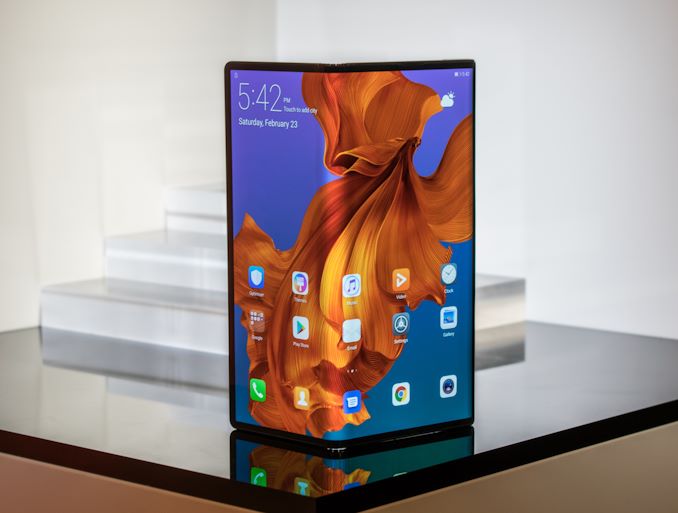
Today at Huawei’s press conference at MWC Barcelona, Huawei has something special to share with us. It’s only been a couple of days since Samsung announced its own foldable phone, the Galaxy Fold – generating a lot of talk and hype around the new form-factor. Huawei of course didn’t stand still and has long been an innovator themselves, introducing a lot of new first-exclusive features over the last year or two. This year, Huawei is ready to steal Samsung’s thunder with the follow-up announcement of the new Mate X – the company’s own take on a foldable smartphone.
From the front, you actually might have issues identifying the Mate X from any other larger screened phone. While the device is folded on itself and you’re facing on the wide screen side, there’s not much to really distinguish it from any other modern bezel-less device.
It’s when you view the device from the top or bottom sides that it becomes evident that this isn’t your usual slab phone design. The Mate X is defined for being a foldable phone with a bendable screen on the outer surface (Whereas the Galaxy Fold’s screen is on the inner surface).
Huawei here has opted for a novel asymmetric design where one half of the screen is narrower than the other one. What this allows the company to do is to create a thicker phone edge where we locate the phone’s quad-camera setup. Because the cameras are all lined up on this “bar”, it means that the phone doesn’t actually distinguish between rear and front cameras. However because when the phone is folded, we have screens on both sides of the phone and you can still take selfie pictures and see yourself in a viewfinder. The bar also serves to provide housing for the USB-C connector as well as the 2-in-1 power button / finger-print sensor.
The fullscreen display on the wide side of the phone when folded acts as a 6.6” unit with a resolution of 2480 x 1148. This results in a relatively modern 19:5:9 aspect ratio which we see in a lot of new flagship devices. Flipping the phone around with the “bar” facing us, we’re presented with a narrower display which stands in at 6.38” and a resolution of 2480 x 892 and a resulting aspect ratio of 25:9.
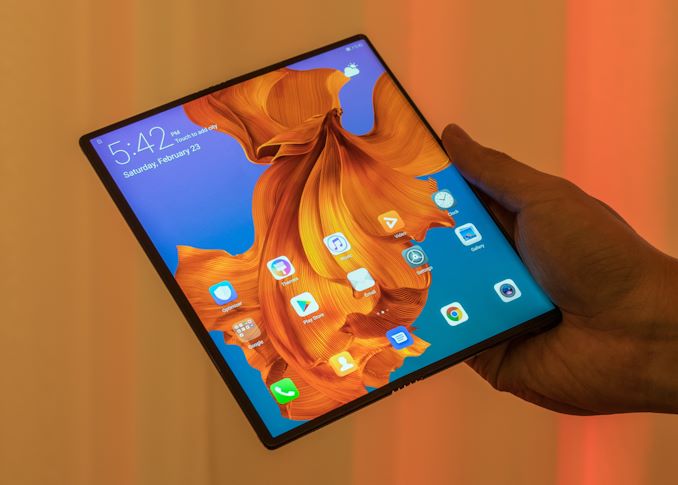
Finally, unfolding the Mate X results in the AMOLED screen to reveal its true physical dimensions. Here we see the full footprint of the 8” flexible panel – coming in at a full native resolution of 2480 x 2200 and its quite square-ish 8:7 aspect ratio.
What is remarkable about the Mate X’s design is just how thin Huawei has managed to make it: The unfolded parts of the phone come in at a mere 5.4mm which is thinner than almost any other phone today, and also much thinner than what Samsung was able to achieve in the Galaxy Fold. The “side-bar” as well as the folded phone thickness comes in at 11mm, which is still a reasonable thickness.
Huawei calls the new hinge system a “Falcon hinge”. It’s to be noted that this seems to be the weak-point of Huawei’s design as it doesn’t look nearly as refined as Samsung’s attempt. At the pre-brief we weren’t able to actually get our hands on the phone, but one unit of the presenter had a notable “waviness” of the screen where the hinge was. It also seemed that the hinge locked into place via some sort of magnetic system, as that’s what it sounded like when unfolding the phone. It’s to be noted that the devices that were presented were still early designs – so Huawei might be able to iterate here and provide something more robust in commercial units.
Even though one segment of the Mate X is only 5.4mm thick, the company has still managed to cram in a lot of battery into the phone. Here we see a battery cell in each segment, resulting in a total 4500mAh battery capacity. Because there’s two batteries, they can be charged at the same time at high charging rates. Here Huawei first proclaims it’s able to charge the phone at 55W of power, reaching 85% of capacity from empty in just 30 minutes.
The number one concern of the Mate X however is the fact that it is a outwards folding phone. By nature of it being a flexible display means that we’re dealing with a polymer material which is softer than glass, and thus also more scratch prone. Samsung’s inwards folding design here will be much less prone to scratches, however the Mate X will be a quite more fragile phone in this regard. In fact it seems Huawei is aware of this as they also presented a protection case in which you can slip the whole device in, trying to address this compromise of this surely better looking, but likely less practical design.
| Mate X | |
| SoC | HiSilicon Kirin 980 |
| Display | Flexible AMOLED Unfolded: 8" 2480 x 2200 8:7 Folded Short Side: 6.38" 2480 x 892 25:9 Folded Wide Side: 6.6" 2480 x 1148 19:5:9 |
| Dimensions | Unfolded display: 5.4mm - Camera/Folded: 11mm |
| RAM | 8GB |
| NAND | 512GB +nanoMemory slot |
| Battery | 4500mAh |
| Primary Rear Camera | yes |
| Secondary Rear Camera | yes |
| Tertiary Rear Camera | yes |
| SIM Size | Dual SIM nanoSIM (or NM card) |
| Cellular Capability | 5G NR NSA/SA 4x4 MIMO 256QAM (4.6Gbps sub-6Ghz) mmWave capable |
| Connectivity | USB Type-C |
| Features | (It Folds) |
| Launch OS | Android 9.0 |
| Launch Price | 2299€ |
In terms of specifications, the Mate X is very much a high end phone. Powered by the Kirin 980, the device holds up with the best in the market in terms of processing power.
What actually further distinguishes the Mate X is that this isn’t just Huawei’s first foldable phone, it’s also Huawei’s first 5G phone. With connectivity provided by HiSilicon’s Balong 5G01 modem, Huawei is able to provide 5G NR NSA/SA connectivity and speeds of up to 4.6GHz at 200MHz of bandwidth at 4x4 MIMO and 256QAM in the sub-6GHz range. We’re not sure if the phone supports mmWave connectivity.
Huawei plans to make the Mate X available in the middle of 2019 at a super-premium price of 2299€. Availability of the phone will strongly depends on the 5G deployments of carriers.
This article is breaking news – we’ll be updating the article as Huawei CEO Richard Yu further details the hardware of the phone.


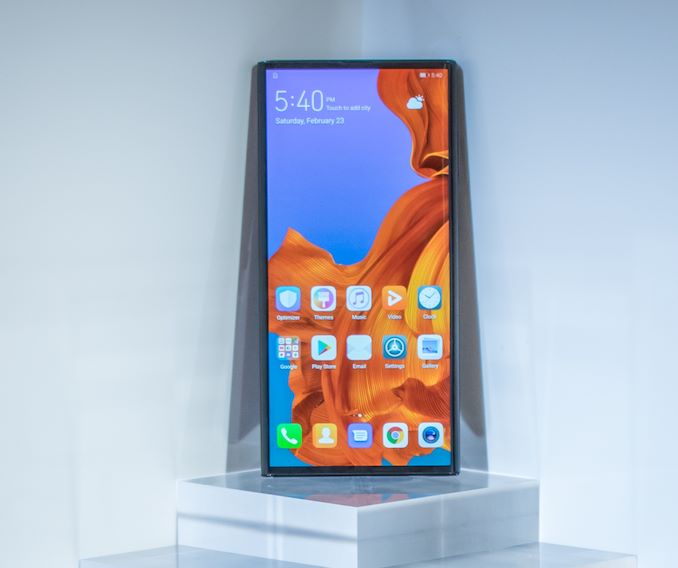
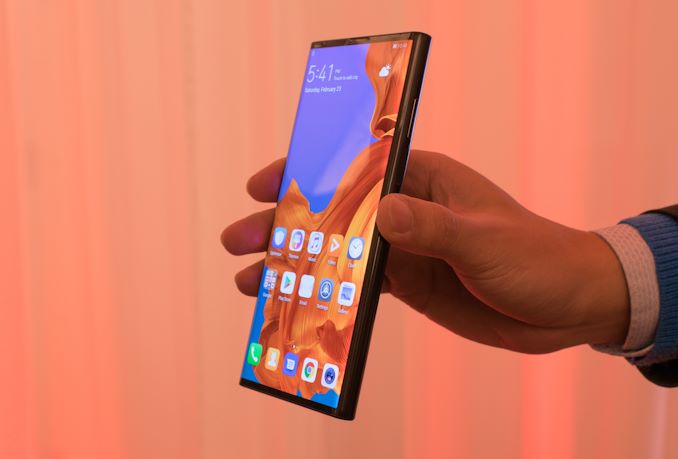
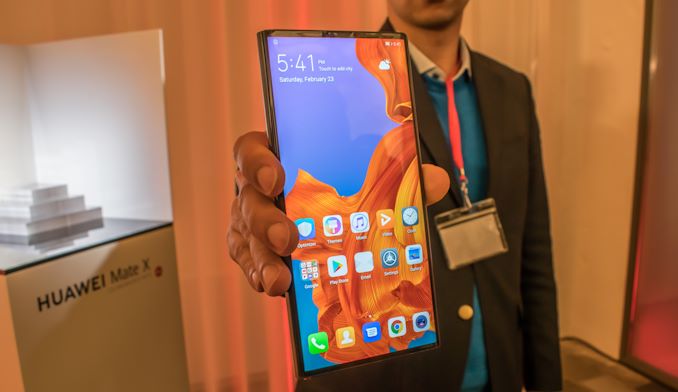
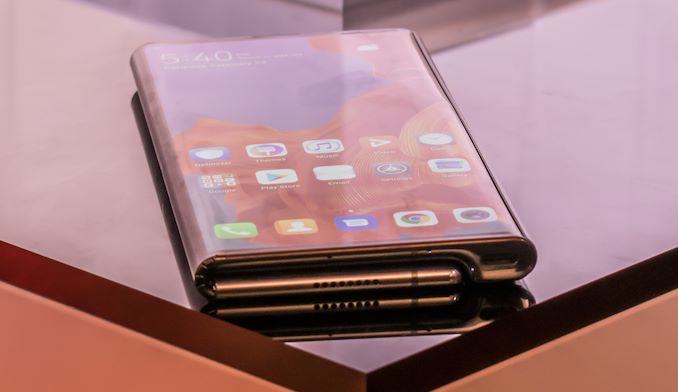
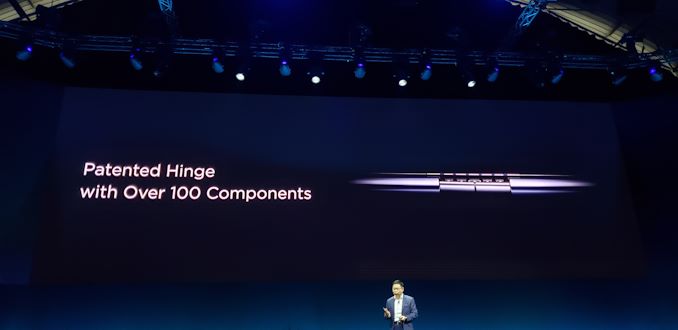
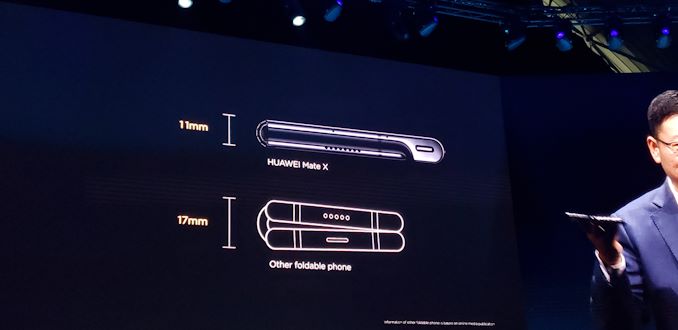
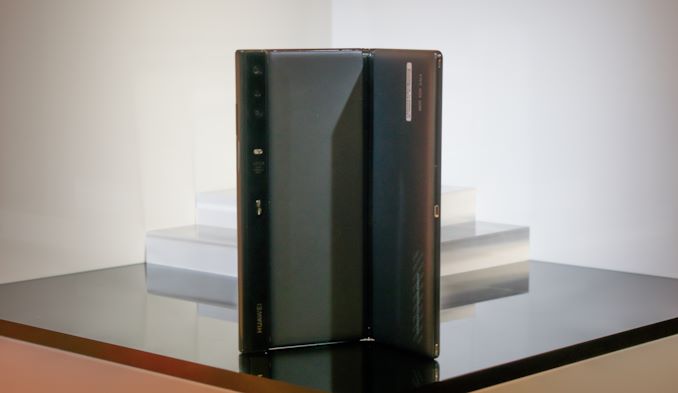



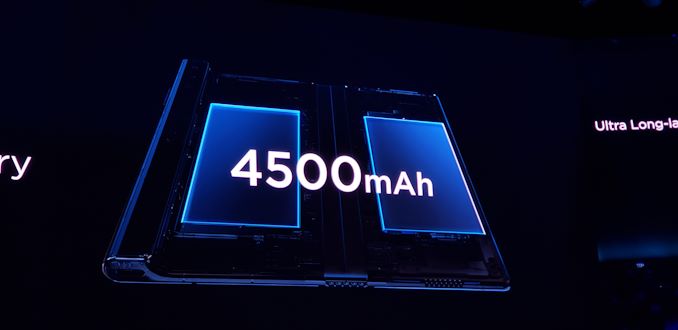
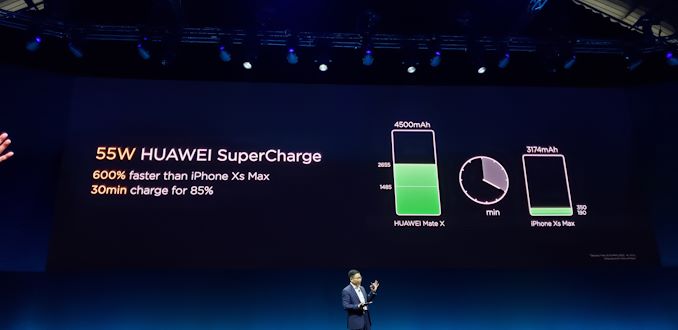
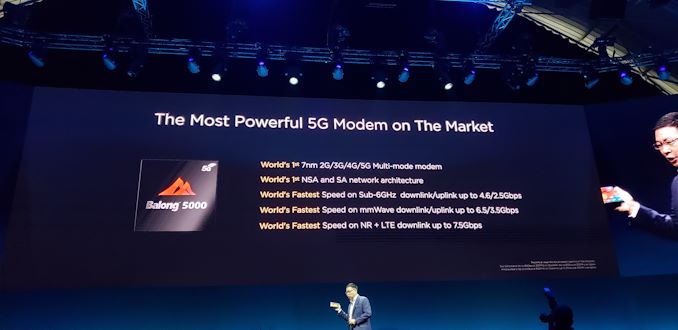

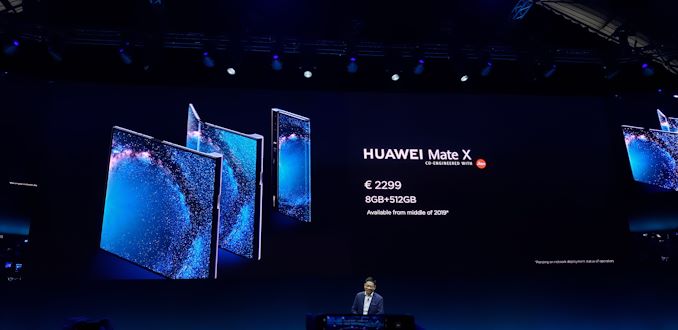








51 Comments
View All Comments
Tams80 - Monday, February 25, 2019 - link
Oh, so they should just let a company with very close links to an authoritarian state do as they please?Do bugger off, shill.
shabby - Sunday, February 24, 2019 - link
Wow much nicer design than samsungs, the galaxy fold almost looks like a prototype compared to this.Tams80 - Monday, February 25, 2019 - link
It looks fantastic, but also highly impractical. Having the entire display exposed is just going to get it damaged, and when folded the display is huge. You already have an unfolded display for a large display, why have such a large folded display?I think Samsung's choice of a smaller, single-handable second display is a much better choice.
name99 - Monday, February 25, 2019 - link
OK, how much do people care about the “coolness” of seamless display? Would you be happy with a design (Samsung or Huawei style) which had two GLASS panels that lined up against each other when the device is unfolded, but which display a slightly visible seam?I suspect that the coolness of “look ma, no seam” has overwhelmed practicality and lifespan; and that the eventual winners in this space (eg if Apple ships such a phone) will have a small (but not invisible) seam. And will be mocked by the early adopters of these current two devices, but will be both cheaper and may more practical all things considered.
Quantumz0d - Sunday, February 24, 2019 - link
Liked how the device has non rounded corners, makes it natural looking and the notch-less display is good. Samsung has UFS 3.0 chipset in their Fold, but failed to include an SD slot while this company included their own bulshit proprietary slot. I feel sad that 3.5mm jack and SD slot both are going away...hope they stay, need another player LG maybe !?About the panel, is it from LG ? The way they mentioned the flat fold is solid from the looks perspective this looks way ahead of Samsung. However the damn price is insane for this and the mention of the "falcon hinge" weak point makes it worse, due to the outward fold, I think both Galaxy Fold and this will be horribly proned to scratches this is worse in both, Maybe we will see some gorilla glass folds lol.
Still I think they should be recognized instead of some stupid clone, I never liked their departure from their Metal Mate series to notched and Samsung/iPhone cloned Mate 20 Pro but this looks original and Interesting from camera setup to the execution.
Mikewind Dale - Sunday, February 24, 2019 - link
I'm on Team Samsung here. Not only does the Huawei screen face outward, but the fact that the screen curves means you are limited in terms of what kinds of screen protectors you can install.With the Samsung, you should be able to put a screen protector on the outside screen, while letting the inside screen be protected by being folded closed.
StormyParis - Sunday, February 24, 2019 - link
I get what you're saying. But when I watched both unveilings, the Samsung came off as ugly and half-baked (that disjointed wedge ! that piddly external screen !), while Huawei's... I want it. But indeed the design might not be very durable.I'm mostly curious what those 4:3 - 1:1 screen ratios are good for. Not media consumption (books, vids), not messaging ... maybe maps and games ? Even multitasking doesn't work very well ?
mkozakewich - Sunday, February 24, 2019 - link
Well, I'd like to look at images without having to flip around a bunch, especially since I keep the autorotate off. If it supports side-by-side multiapp, that means you can run two full-sized apps at once instead of having squished heights. For anything not constrained by aspect ratio, like maps or some web pages, content is just more visible.I usually zoom in to read web pages easily, and Opera reflows text to fit the screen, but most screens are narrow enough that bullet points trail off the side or images jump around a little. This would keep everything in line even if I zoom in a little.
Manch - Monday, February 25, 2019 - link
Letter, A4 and Legal when showing two in a book style aren't far off from 4:3 You could have a side by side view of two pages while having plenty of room for header, tool buttons etc. From a productivity stand point its a great format. Also TVs used to be 4:3 and the res of the panel means you could have a nice 16:9 image with black bars that would look just fine.s.yu - Monday, February 25, 2019 - link
I agree. The main problem with the Samsung is that the small screen has rather thick bezels, but overall it's the more functional solution at this point.